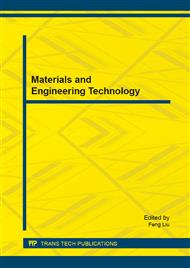p.630
p.635
p.640
p.644
p.652
p.661
p.665
p.669
p.674
Study on the Cable Crosstalk of Ship Cabin
Abstract:
The mechanism of cable crosstalk involving what and how does the factors affect the level of crosstalk is introduced in detail. A transmission line model for predicting crosstalk between power cable and the other wires nearby with common reference ground based on multiconductor transmission theory (MTL) is developed. Crosstalk among circuit configurations when the victim cables with load terminations are different types is analyzed and simulated. Models where the types of the victim lines are shielded coaxial cable, shielded twisted pair and unshielded twisted pair are simulated. It is found that the shielding can provide an attenuation of about 50dB than the unshielded cables. In addition, the condition of multi-cable coupling is simulated and some thoughts are brought out to inspire more detailed study. Finally, some measures are suggested to suppress the crosstalk between cables according to the two-type of coupling mechanism (inductive coupling and capacitive coupling).
Info:
Periodical:
Pages:
652-657
Citation:
Online since:
January 2015
Authors:
Keywords:
Price:
Сopyright:
© 2015 Trans Tech Publications Ltd. All Rights Reserved
Share:
Citation:


